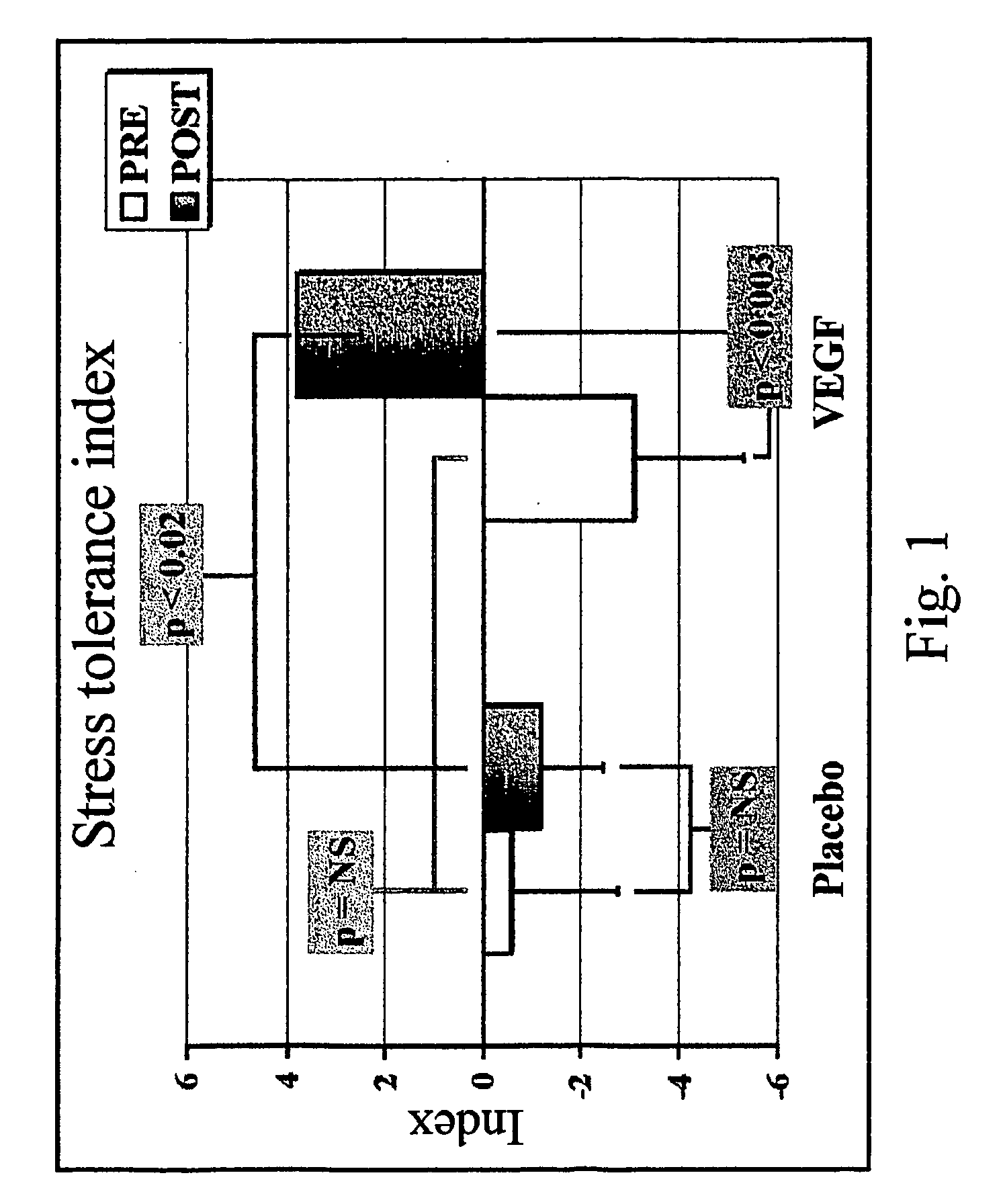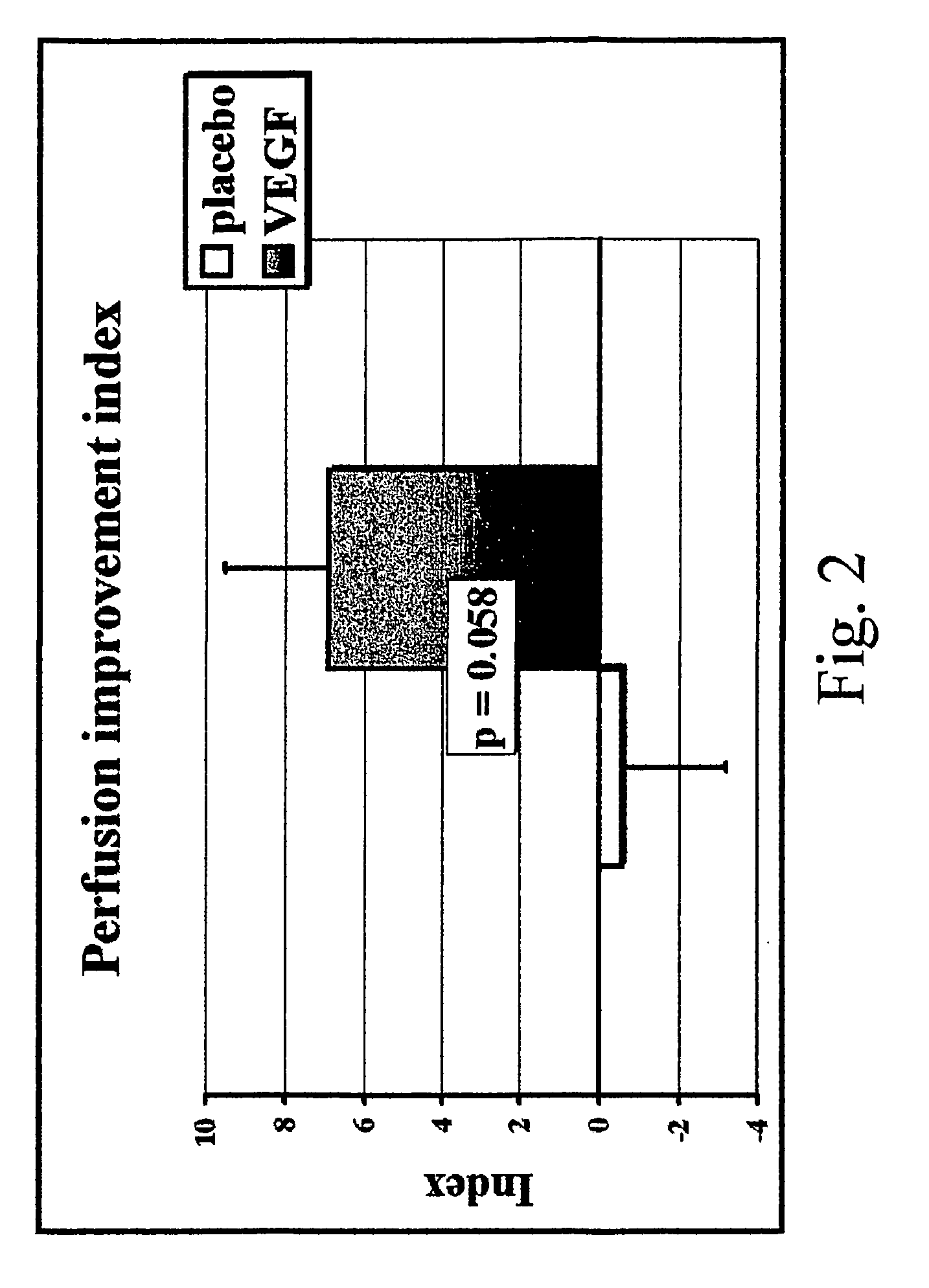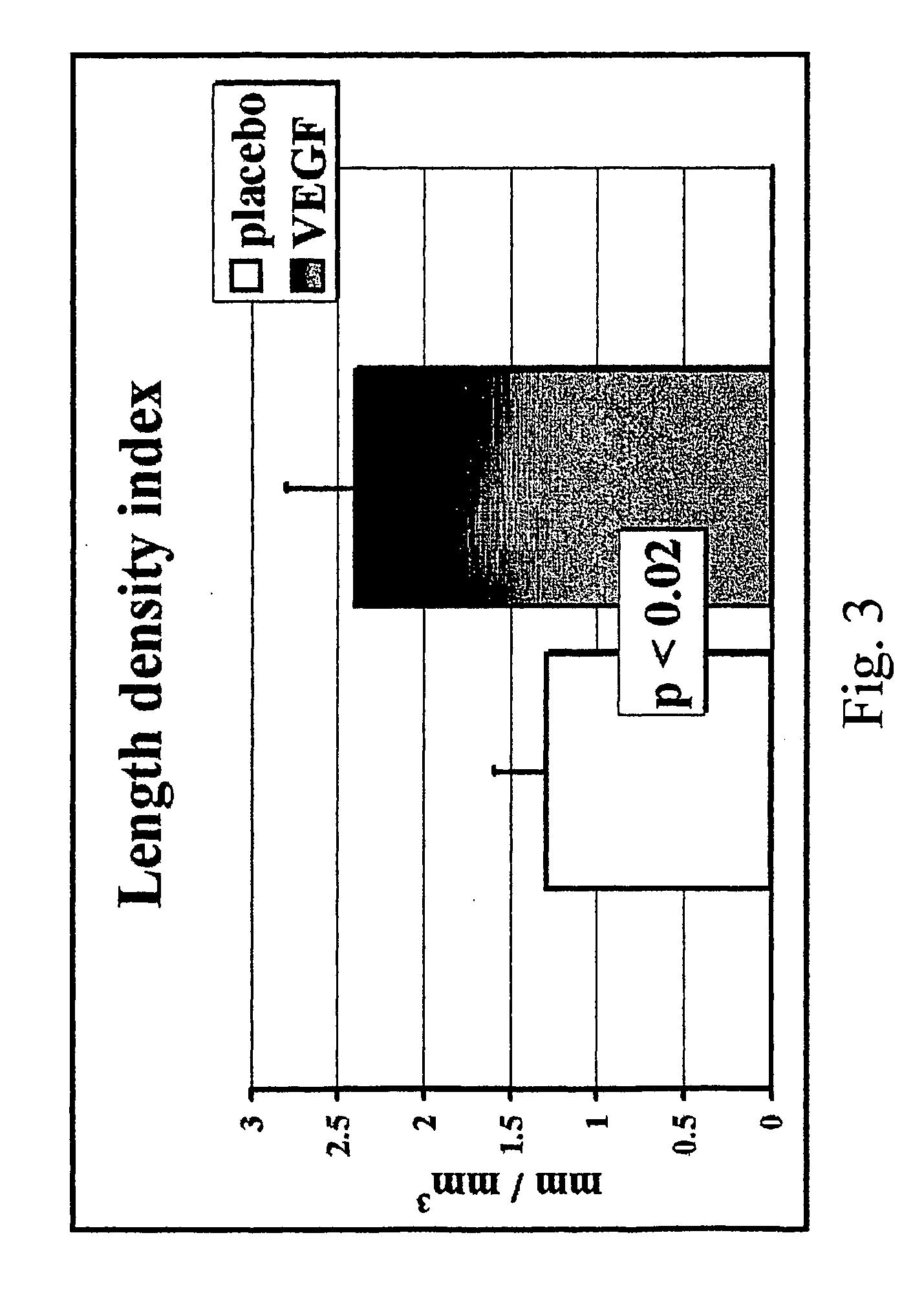Method to induce neovascular formation and tissue regeneration
a neovascular and tissue regeneration technology, applied in the field of neovascular formation and tissue regeneration, can solve the problems of ischemic heart, morbidity and mortality, many patients who are still symptomatic and cannot benefit from conventional therapy
- Summary
- Abstract
- Description
- Claims
- Application Information
AI Technical Summary
Problems solved by technology
Method used
Image
Examples
example i
Induction of Ischemia
[0117] Eighty Landrace pigs weighing approximately 25 kg (approx. 3 months of age) were submitted to the following protocol: 1) each individual underwent clinical and laboratory assessment of good health; 2) a sterile thoracotomy was performed at the 4th left intercostal space under general anesthesia (induction: thiopental sodium 20 mg / kg; maintenance: 2% enflurane) and the circumflex coronary artery was dissected free from surrounding tissue at its proximal portion; 3) an Ameroid constrictor was placed embracing the origin of the circumflex coronary artery; and 4) the thoracotomy was repaired.
example ii
Basal Pre-Treatment Studies
[0118] Three weeks after the first surgery indicated in the previous example, basal (pre-treatment) studies were performed on the individuals. The studies were conducted under sedation with sufficient doses of intravenous sodium thiopental and under electrocardiographic control. Basal myocardial perfusion studies were performed on each individual. The left ventricular perfusion was quantified by single photon emission computed tomography (SPECT) utilizing an ADAC Vertex Dual Detector Camera System (ADAC Healthcare Information Systems Inc., USA). Sestamibi marked with 99mTc was utilized as contrast.
[0119] The studies were performed at rest and under pharmacological challenge with progressive doses of intravenous dobutamine. The dobutamine infusion was interrupted when heart rate was at least a 50% above the basal (rest) values.
[0120] Individuals fulfilling the inclusion criterium (hipoperfusion in a territory consistent with the circumflex coronary arter...
example iii
Administration of VEGF Plasmid and Placebo Plasmid
[0121] The twenty six individuals of the previous example were distributed in two groups: A first group consisting of 16 individuals (Group I) and a second group consisting of 10 individuals (Group II). Group I individuals were utilized to perform histopathological and physiological studies. Group II individuals were utilized to assess the presence and expression of the VEGF plasmid.
[0122] Group I individuals were randomized into two subgroups (Group I-T and Group I-P) with the same number of members (4 females and 4 males per subgroup). The treated group was designated Group I-T. The placebo group was designated Group I-P.
[0123] Group II individuals were randomized into two subgroups (Group II-T and Group II-P). Eight individuals were allocated to Group II-T. Two individuals were allocated to Group II-P. The treated group was designated Group II-T. The placebo group was designated Group II-P.
[0124] A sterile reopening of the pre...
PUM
| Property | Measurement | Unit |
|---|---|---|
| Angle | aaaaa | aaaaa |
| Angle | aaaaa | aaaaa |
| Dimensionless property | aaaaa | aaaaa |
Abstract
Description
Claims
Application Information
 Login to View More
Login to View More - R&D
- Intellectual Property
- Life Sciences
- Materials
- Tech Scout
- Unparalleled Data Quality
- Higher Quality Content
- 60% Fewer Hallucinations
Browse by: Latest US Patents, China's latest patents, Technical Efficacy Thesaurus, Application Domain, Technology Topic, Popular Technical Reports.
© 2025 PatSnap. All rights reserved.Legal|Privacy policy|Modern Slavery Act Transparency Statement|Sitemap|About US| Contact US: help@patsnap.com



